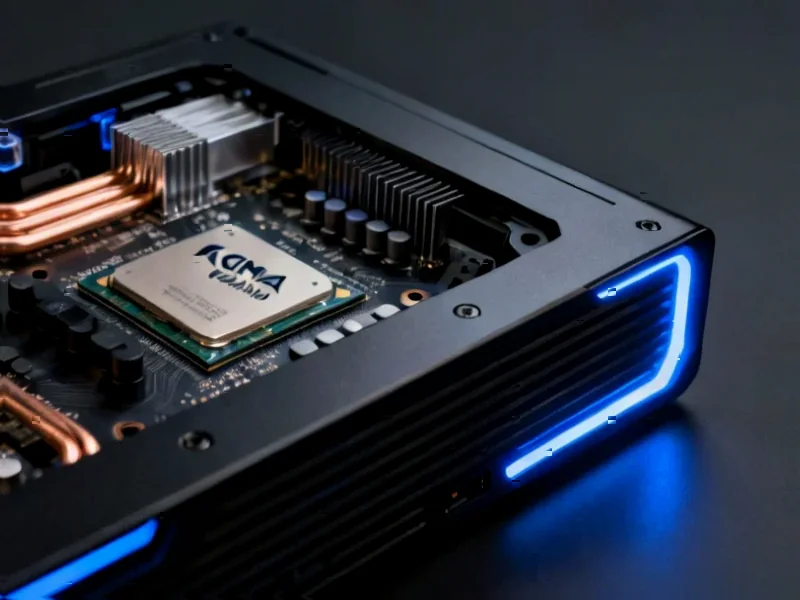According to DCD, Detroit-based utility DTE Energy has finalized its first data center contract with a hyperscaler for 1.4GW of power capacity, with the customer expected to ramp up over the next two to three years. The utility revealed during its Q3 results that it’s in advanced discussions for more than 3GW of additional hyperscale data center load, has a further 4GW in its early pipeline, and intends to sign at least 1GW by year-end. DTE Energy CEO Joi Harris stated the agreement creates “substantial affordability benefits for existing customers” while advancing the company’s long-term strategy. The utility has invested nearly $3 billion through Q3 2025 and remains on target for $4.4 billion in total investments this year, focusing on infrastructure modernization and cleaner power generation. This landmark deal represents a fundamental shift in how utilities approach massive, concentrated power demands.
Table of Contents
The Hyperscale Power Revolution
What makes this 1.4GW deal particularly significant isn’t just the staggering scale—it’s equivalent to powering approximately one million homes—but the fundamental shift in utility business models it represents. Traditional DTE Energy and other regional utilities historically managed distributed, predictable loads across residential, commercial, and industrial customers. Hyperscale data centers represent concentrated, 24/7 power demands that can exceed the consumption of small cities. The revelation that DTE has up to 8GW total in various stages of development suggests we’re witnessing the early stages of a permanent transformation in how electricity grids are designed and operated.
Energy Storage as Critical Infrastructure
The explicit mention of energy storage investments being directly funded by the data center customer represents a novel approach to infrastructure financing. Rather than spreading costs across all ratepayers—a model that’s drawn regulatory scrutiny in other markets—DTE appears to be pioneering a direct customer funding model for specialized infrastructure. This “one-to-one alignment between capacity and demand” creates a scalable framework that could become standard for utilities facing similar hyperscale demands. The storage component is particularly crucial for managing the intermittent nature of renewable generation while ensuring the consistent power availability that hyperscale operations require.
Michigan’s Emerging Data Center Ecosystem
While the unnamed hyperscaler’s identity remains confidential, the advanced stage of discussions—with secured land positions and community backing—suggests Michigan is becoming a serious contender in the data center location race. The presence of established players like Sentinum and Switch provides existing infrastructure and talent pools that make the region increasingly attractive. Michigan’s cooler climate offers natural cooling advantages, while its Great Lakes water access provides potential for various cooling technologies. The state’s industrial heritage also means existing transmission infrastructure and utility experience with large industrial customers, giving it advantages over regions with primarily residential-focused utilities.
Grid Reliability and Ratepayer Implications
The CEO’s claim of “affordability benefits for existing customers” deserves careful scrutiny. While spreading fixed infrastructure costs across more customers can theoretically lower rates, the massive new demands could strain existing generation capacity during peak periods. The earnings call transcript indicates that near-term growth will use existing capacity, but longer-term expansion requires “fresh investment in baseload generation.” This suggests potential rate impacts down the line, though the direct customer funding model for storage might mitigate some concerns. Regulators will need to ensure that residential customers don’t end up subsidizing the specialized infrastructure required for hyperscale operations.
The Future Utility Business Model
DTE’s approach represents a blueprint for how traditional utilities can adapt to the AI-driven power demand explosion. The combination of using existing capacity for near-term growth while planning strategic investments in generation and storage creates a phased approach that manages risk while capturing opportunity. The fact that these incremental investments fall outside DTE’s current five-year capital plan indicates both the unexpected speed of data center demand growth and the need for flexible planning frameworks. Other utilities watching DTE’s experience will likely develop similar pipeline management strategies for hyperscale customers, potentially creating a new specialization within the utility sector focused exclusively on massive, concentrated loads.
Competitive Landscape Shift
The scale of DTE’s disclosed pipeline—up to 8GW total—suggests we’re seeing the early consolidation of data center development around utilities with available capacity and strategic vision. This could create regional power hubs similar to what we’ve seen in Virginia with Dominion Energy, potentially reshaping competitive dynamics across the data center industry. Utilities that can offer scalable power solutions with clear expansion pathways may become preferred partners, while regions with constrained grids could see development slow despite other advantages. The race to build data center-friendly utility infrastructure is becoming as competitive as the data center market itself.
Related Articles You May Find Interesting
- Zoom’s Surprising Second Act: From Pandemic Darling to Value Play
- Animal Crossing’s Switch 2 Upgrade Signals Nintendo’s Next-Gen Strategy
- Russia’s Refinery Crisis Deepens as Fuel Exports Hit War-Time Lows
- Docusign’s OpenAI Gambit: Survival Strategy in the AI Era
- AOL’s Latest Chapter: Bending Spoons Bets Big on Digital Legacy



